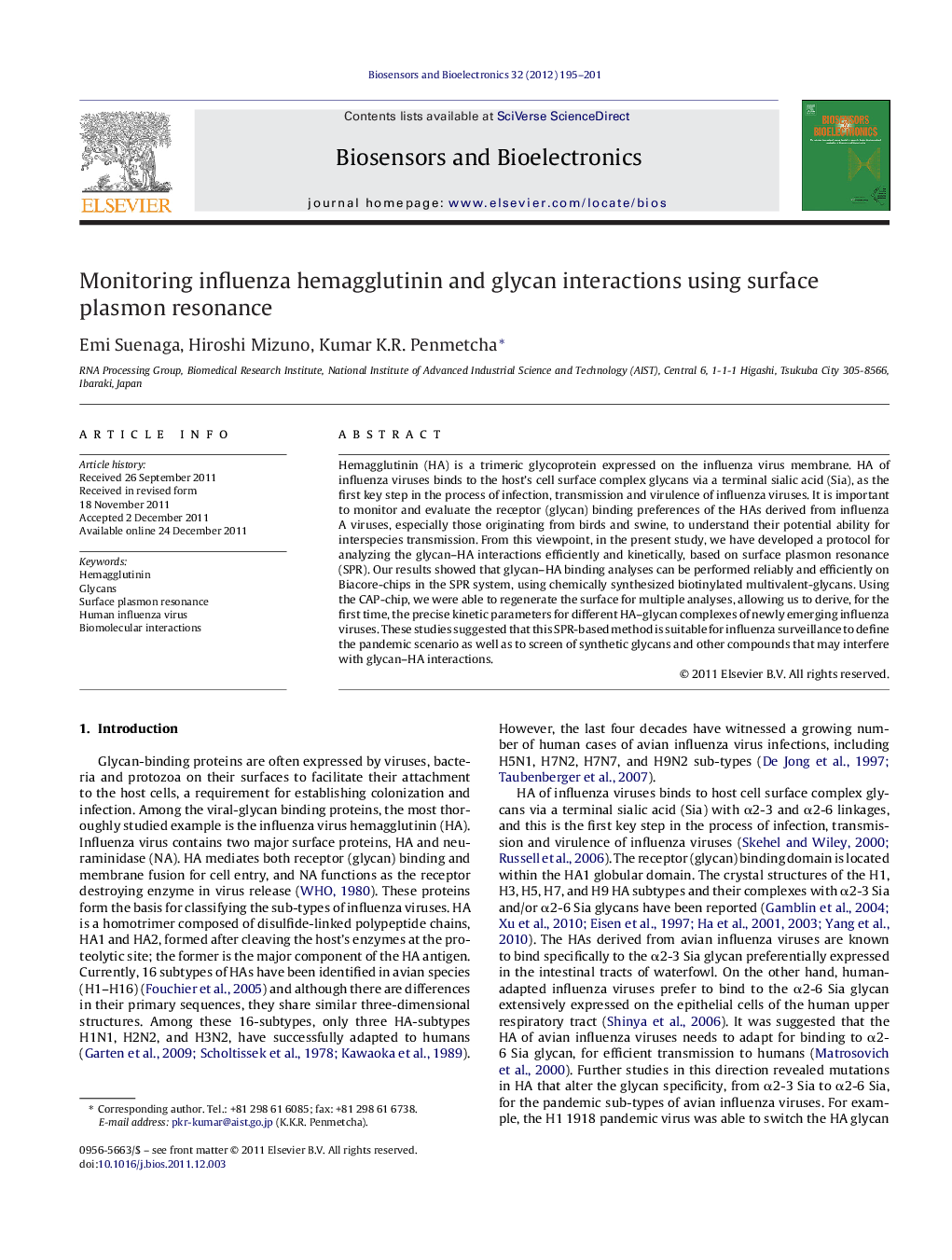| کد مقاله | کد نشریه | سال انتشار | مقاله انگلیسی | نسخه تمام متن |
|---|---|---|---|---|
| 867556 | 909785 | 2012 | 7 صفحه PDF | دانلود رایگان |

Hemagglutinin (HA) is a trimeric glycoprotein expressed on the influenza virus membrane. HA of influenza viruses binds to the host's cell surface complex glycans via a terminal sialic acid (Sia), as the first key step in the process of infection, transmission and virulence of influenza viruses. It is important to monitor and evaluate the receptor (glycan) binding preferences of the HAs derived from influenza A viruses, especially those originating from birds and swine, to understand their potential ability for interspecies transmission. From this viewpoint, in the present study, we have developed a protocol for analyzing the glycan–HA interactions efficiently and kinetically, based on surface plasmon resonance (SPR). Our results showed that glycan–HA binding analyses can be performed reliably and efficiently on Biacore-chips in the SPR system, using chemically synthesized biotinylated multivalent-glycans. Using the CAP-chip, we were able to regenerate the surface for multiple analyses, allowing us to derive, for the first time, the precise kinetic parameters for different HA–glycan complexes of newly emerging influenza viruses. These studies suggested that this SPR-based method is suitable for influenza surveillance to define the pandemic scenario as well as to screen of synthetic glycans and other compounds that may interfere with glycan–HA interactions.
► Hemagglutinin, HA, of influenza viruses binds to the host's cell surface complex glycans.
► Glycan binding preference of different HAs derived from sub-types of influenza A viruses is important.
► We have developed SPR-based method for analyzing the glycan–HA interactions.
► The method allowed us to analyze the glycan–HA interactions kinetically.
► Using our method compounds that may interfere with glycan–HA interactions can be screened.
Journal: Biosensors and Bioelectronics - Volume 32, Issue 1, 15 February 2012, Pages 195–201